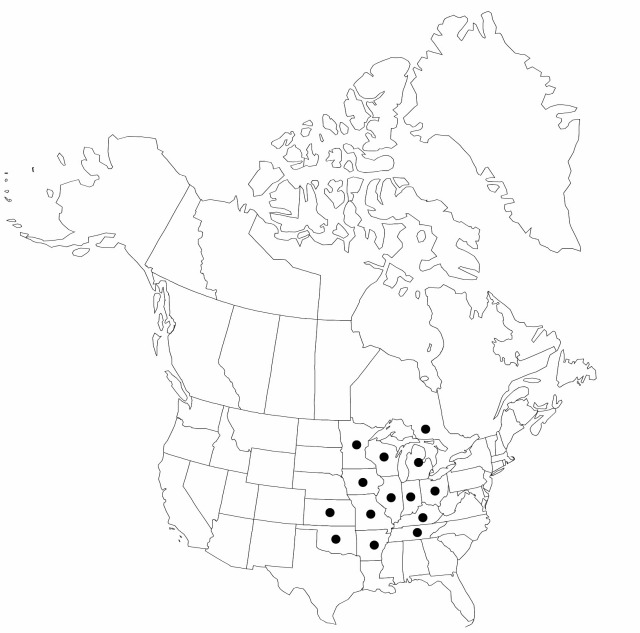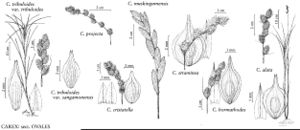Difference between revisions of "Carex muskingumensis"
Ann. Lyceum Nat. Hist. New York 1: 66. 1824.
FNA>Volume Importer |
FNA>Volume Importer |
(No difference)
| |
Revision as of 20:09, 24 September 2019
Plants densely cespitose. Culms 40–100 cm; vegetative culms conspicuous, with spreading leaf blades evenly along stem. Leaves: sheaths adaxially green-veined to within 3 mm of collar, adaxially firm, summits usually brown tinged, U- or V-shaped, thick; distal ligules to 2 mm; blades 7–12 per fertile culm, 12–25 cm × 3–5 mm. Inflorescences open at least proximally, brown, (4–)5–9 cm × 10–20 mm; proximal internode (4–)5–15 mm; 2d internode (3–)5–11 mm; proximal bracts scalelike. Spikes 5–12, distant, distinct, lanceoloid, 12–28 × 3.5–7 mm, bases tapered, apex acute. Pistillate scales white-hyaline or pale brown with pale brown midstripe, oblong-ovate, 4–5 mm, 1/2 length of and narrower than perigynia, apex acute. Perigynia appressed-erect, pale brown, conspicuously 5–7-veined abaxially, conspicuously 3–7-veined adaxially, lanceolate, flat to plano-convex, 6–9 × (1.5–) 2–2.5 mm, 0.3 mm thick, margin flat, including wing 0.2–0.4 mm wide; beak tip flat, ciliate-serrulate, abaxial suture inconspicuous, distance from beak tip to achene 3.1–4.5 mm. Achenes elongate-oblong, 2–2.7 × 0.8–0.9 mm, 0.3 mm thick. 2n = 80.
Phenology: Fruiting early–mid summer.
Habitat: Moist to wet, deciduous flood plains, lowland woods, and thickets
Elevation: 100–400 m
Distribution

Ont., Ark., Ill., Ind., Iowa, Kans., Ky., Mich., Minn., Mo., Ohio, Okla., Tenn., Wis.
Discussion
Selected References
None.
